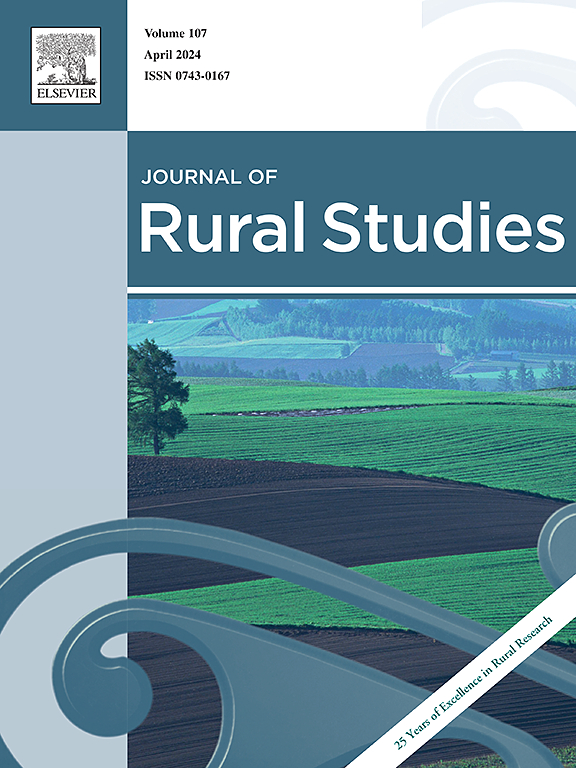From social media to price swings: Dissecting the dynamic key drivers of public sentiment on the pricing fluctuation of minor agricultural products
IF 5.1
1区 社会学
Q1 GEOGRAPHY
引用次数: 0
Abstract
Minor agricultural products, characterized by limited supply-demand scales and geographic concentration, face severe sentiment-driven price volatility exacerbated by speculation. Challenging static supply-demand frameworks, this study proposes a novel framework using ginger to integrate online sentiment text mining with a Time-Varying Parameter Vector Autoregression (TVP-VAR) model. Three sentiment factors—market speculation, transaction willingness, and consumer attention—are extracted from social media (2019–2022). The TVP-VAR model captures their time-sensitive impacts via impulse response analysis.
Key findings reveal temporally heterogeneous mechanisms: market speculation dominates mid-term trends (3–6 months), while transaction willingness drives short-term volatility (0–3 months) with rapid decay. Consumer attention shows asymmetric effects. Crucially, it uncovers regime shifts in factor dominance: during supply chain disruptions (e.g., COVID-19 lockdowns), speculation's influence intensified remarkably compared to stable periods.
Theoretically, this study bridges behavioral economics and agricultural markets by showing sentiment overrides supply-demand equilibria, offering empirical evidence. Practically, it enables dynamic monitoring: real-time sentiment analytics help policymakers preempt speculation and mitigate panic, enhancing market stability. The framework's adaptability to concentrated commodities (e.g., garlic, spice crops) supports agricultural economic stabilization, providing scalable tools for efficiency-risk balance.
从社交媒体到价格波动:剖析公众情绪对小农产品价格波动的动态关键驱动因素
小农产品具有供需规模有限、地域集中等特点,市场情绪驱动的价格波动严重,投机行为加剧。挑战静态供需框架,本研究提出了一个新的框架,使用生姜将在线情感文本挖掘与时变参数向量自回归(TVP-VAR)模型相结合。从社交媒体(2019-2022)中提取了市场投机、交易意愿和消费者关注三个情绪因素。TVP-VAR模型通过脉冲响应分析捕捉了它们的时间敏感影响。主要发现揭示了时间异质性机制:市场投机主导中期趋势(3-6个月),而交易意愿驱动短期波动(0-3个月)并迅速衰减。消费者注意力呈现不对称效应。至关重要的是,它揭示了要素主导地位的机制变化:在供应链中断期间(例如COVID-19封锁),与稳定时期相比,投机的影响显著增强。从理论上讲,本研究通过显示情绪超越供需均衡,提供了经验证据,将行为经济学和农业市场联系起来。实际上,它实现了动态监控:实时情绪分析帮助政策制定者先发制人,防止投机行为,减轻恐慌,增强市场稳定。该框架对浓缩商品(如大蒜、香料作物)的适应性支持农业经济稳定,为效率-风险平衡提供了可扩展的工具。
本文章由计算机程序翻译,如有差异,请以英文原文为准。
求助全文
约1分钟内获得全文
求助全文
来源期刊

Journal of Rural Studies
Multiple-
CiteScore
9.80
自引率
9.80%
发文量
286
期刊介绍:
The Journal of Rural Studies publishes research articles relating to such rural issues as society, demography, housing, employment, transport, services, land-use, recreation, agriculture and conservation. The focus is on those areas encompassing extensive land-use, with small-scale and diffuse settlement patterns and communities linked into the surrounding landscape and milieux. Particular emphasis will be given to aspects of planning policy and management. The journal is international and interdisciplinary in scope and content.
 求助内容:
求助内容: 应助结果提醒方式:
应助结果提醒方式:


